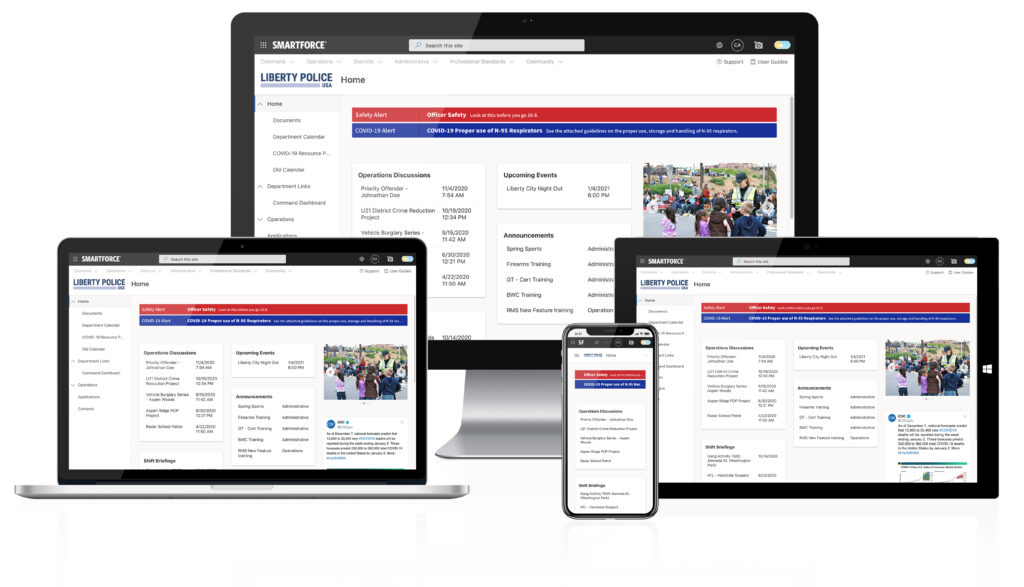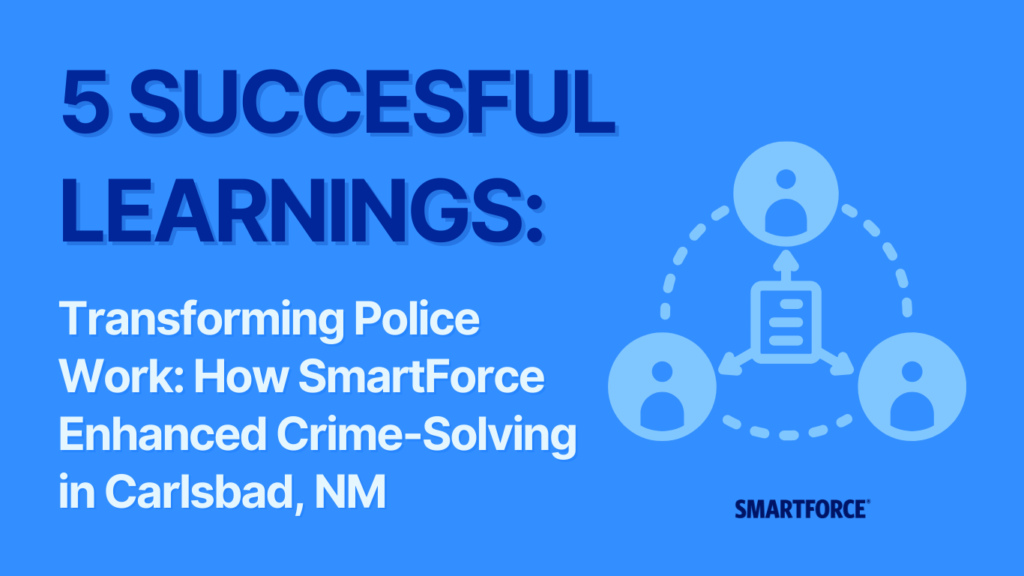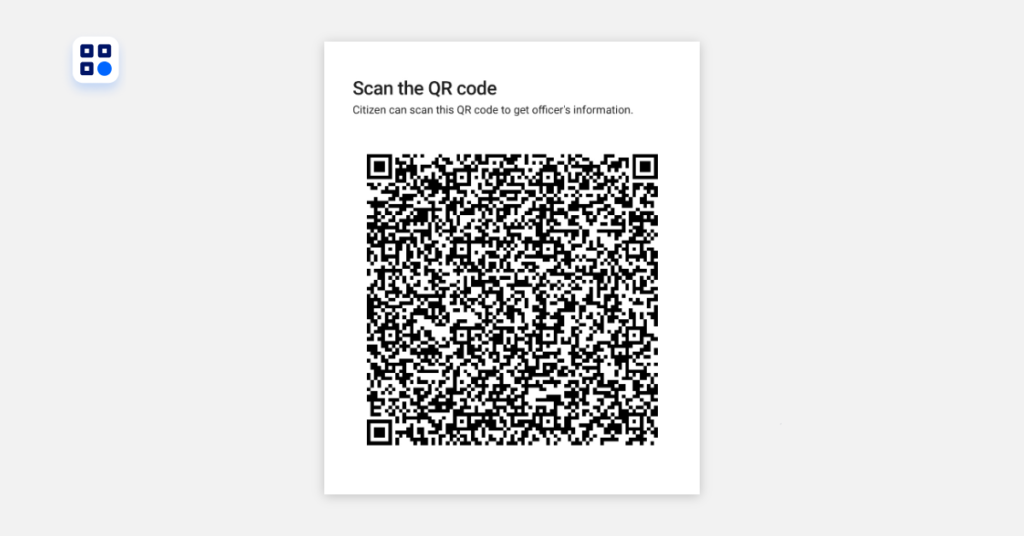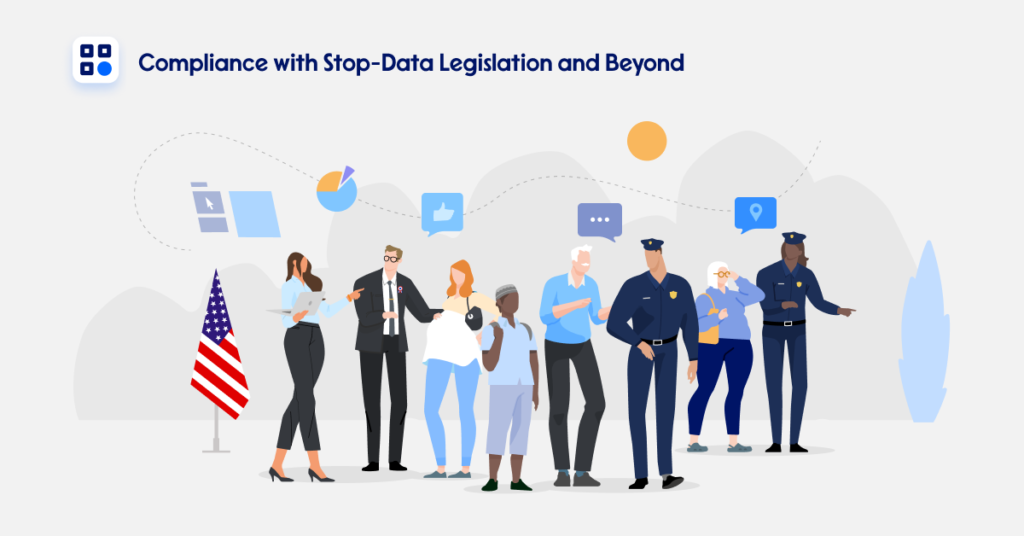 The SmartForce® Team
The SmartForce® Team
SmartForce Technologies Inc.
Within the complex world of contemporary law enforcement, data has emerged as a crucial thread. Law enforcement agencies across the United States increasingly recognize the value of comprehensive, accurate data collection and reporting, particularly in police stop-and-contact incidents. But while the importance of such data is evident, the pathway to obtaining it is often fraught with challenges. In this first installment of our blog series “Bridging the Gap: Data-Driven Policing and Community Trust”, we explore the complexities of stop-and-contact data collection and present CitizenContact as an innovative solution to these challenges.
The Role of Stop-and-Contact Data in Policing
Data is an invaluable asset in today’s world. Its potential to impact our decisions, behaviors, and understandings is limitless, particularly in sectors as critical as law enforcement. With the rapid advancement of technology, police departments can now collect, store, and analyze vast amounts of data. Stop-and-contact data is among the most valuable datasets, which directly looks into everyday police-public interactions.
Police stop-and-contact data refers to information collected during any interaction between law enforcement officers and citizens, including traffic stops, pedestrian stops, and calls-for-service. The data typically includes details about the reason for the stop, the actions taken, the outcome, and the individuals’ perceived demographic characteristics.
This data holds the key to many transformative possibilities for policing. Firstly, it can reveal crucial patterns and trends. Do traffic stops disproportionately impact specific communities? Are there disparities in outcomes based on race or ethnicity? Answers to these questions can help law enforcement agencies identify potential areas of bias and rectify them proactively.
Furthermore, analyzing this data can also help with resource allocation and policy development. By understanding where and when most stops occur, police departments can make informed decisions about where to assign officers and at what times and even guide training and officer wellness programs.
However, the power of stop-and-contact data can only be unlocked by law enforcement agencies if collected accurately, completely, and effectively analyzed. This is where the challenges begin to surface. Collecting such granular data across various jurisdictions with unique policies and procedures is a monumental task.
Let’s delve deeper into these challenges, highlighted in a study by Pierson et al. (2020).
The Challenges in Stop-and-Contact Data Collection
Accurate and comprehensive stop-and-contact data collection is paramount, yet it’s complicated and often riddled with obstacles. These complexities are highlighted in the study, “A large-scale analysis of racial disparities in police stops across the United States,” by Pierson et al. (2020). Their methodology was intricate, pulling data from multiple sources, including the Police–Public Contact Survey (PPCS), periodic reports on traffic stops from local and state agencies, and data gathered from open-source records requests. Pierson et al. collected data on approximately 221 million stops and utilized over 94 million as their primary dataset.
Pierson et al. paints a vivid picture — raw numbers of stops across different racial and ethnic groups, while significant, do not provide concrete evidence of racially disparate treatment alone. Researchers utilized a three-pronged approach to test for racial disparities.
Veil of Darkness Test: a method that compares daytime and nighttime stops to mitigate the effect of racial visibility, allows for an objective assessment of race’s role in stop decisions. However, its effectiveness is constrained by the assumption that officer behavior remains constant throughout the day and night, an assumption that may not always hold true.
Outcomes Test: A method that measures the post-stop outcomes helps us understand if disparate treatment exists after the stop. But this test is contingent upon the officer’s discretion and judgment, making it sensitive to the biases inherent in that process.
Hit Rate Test: An analysis of the rate at which contraband is found following a stop, provides a performance metric of police activity. While insightful, this test often overlooks the complexity of police decisions and can be influenced by many factors, such as different policing strategies in different neighborhoods.
While each bears inherent strengths and limitations, these tests work together to form a more complete picture. Their collective insights emphasize the crucial role of nuanced, comprehensive stop-and-contact data collection in understanding and addressing potential racial disparities in policing.
You can find further details on the study’s methods here and on the Stanford Open Policing Project website.
The research by Pierson et al. identified three core challenges in collecting and analyzing stop data:
The decentralized nature of policing in the United States: The independent operation of law enforcement across numerous U.S. jurisdictions leads to a substantial lack of data collection and reporting standardization. Due to this decentralization, the researchers encountered considerable obstacles in analyzing data from various sources. The distinct policies and procedures each agency uses for data collection resulted in disparities in the data’s types, formats, and thoroughness.
Lack of transparency from police departments: Some law enforcement agencies were reluctant to release their data, which hindered large-scale, cross-jurisdictional analyses of traffic stops. Despite leveraging the PPCS and open-source records requests, the team couldn’t access all the needed data.
Incomplete or inaccurate data: Encountering data that was either incomplete or contained inaccuracies complicated their analysis further. Such gaps, inconsistencies, and inaccuracies make drawing precise and reliable conclusions about police-public interactions challenging.
These challenges underline the complexities of stop-and-contact data collection and the necessity for a robust, standardized, and transparent approach. They emphasize the importance of ensuring data accuracy and completeness to yield actionable insights to facilitate improved policing practices and enhance community trust.
Key Recommendations from Pierson et al. Study
Pierson et al. (2020) exposed the challenges inherent in collecting stop-and-contact data and provided valuable recommendations to mitigate these issues and improve the accuracy and usefulness of this data. The following suggestions emerged from their extensive research:
Standardization of Data Collection Procedures: law enforcement agencies nationwide are encouraged to adopt uniform procedures for collecting data on traffic stops and other forms of police-public contacts. Such standardization ensures the ease of data collection, enhances accuracy, and offers a more comprehensive depiction of these interactions.
Accessibility of Data: A push for greater transparency necessitates that law enforcement agencies make data on traffic stops and other police-public contacts readily accessible to the public. Accessibility empowers researchers, policymakers, and community stakeholders to scrutinize the data, fostering the identification of discriminatory patterns and ensuring accountability.
Collection of More Demographic Data: To comprehensively understand the effects of policing on various communities, law enforcement agencies should collect an expanded range of demographic data on individuals involved in police stops. This added layer of detail can provide invaluable insights into the experiences of different racial and ethnic groups, spotlighting any areas of concern.
Data-Driven Policy Decisions: law enforcement agencies should leverage the insights from traffic stop data and other police-public contact data to inform their policy decisions. This data-driven approach will help ensure that policing practices are fair, equitable, and responsive to the needs and experiences of all community members.
These recommendations by Pierson et al. serve as a road map for how law enforcement agencies can improve their data collection, analysis, and transparency practices, thereby advancing modern policing principles. They underscore the pivotal role of comprehensive op-and-contact data in fostering equitable policing and community trust.
Introducing CitizenContact: A Comprehensive Solution
Here is where CitizenContact steps in. Born out of a deep understanding of these challenges, CitizenContact provides a comprehensive solution for stop-and-contact data collection, reporting, and analysis. Designed for law enforcement agencies of all sizes, CitizenContact simplifies the process of data collection and validation, streamlines reporting, and provides insightful analytics.
CitizenContact addresses the issues of data decentralization by offering a unified database for stop-and-contact data, enabling law enforcement agencies to maintain clean and accurate records. Our tool encourages transparency by making data collection and reporting a seamless process, making it easier for departments to share data when required.
In terms of data quality, CitizenContact’s intelligent contact report form and validation features ensure the collection of complete and accurate data, helping police departments shift from mere compliance in states required to collect stop-and-contact data to actionable insights, using data to guide operational decisions, resource allocation, and community engagement strategies.
In the face of the challenges outlined by Pierson et al., CitizenContact emerges as a powerful tool that facilitates data collection and analysis and contributes to the broader goals of 21st-century policing: building safer and more interconnected communities.
Subscribe to and stay tuned for our next blog, where we’ll delve deeper into the features of CitizenContact and how they address the challenges of stop-and-contact data collection and reporting.
Click here to learn more about CitizenContact.














